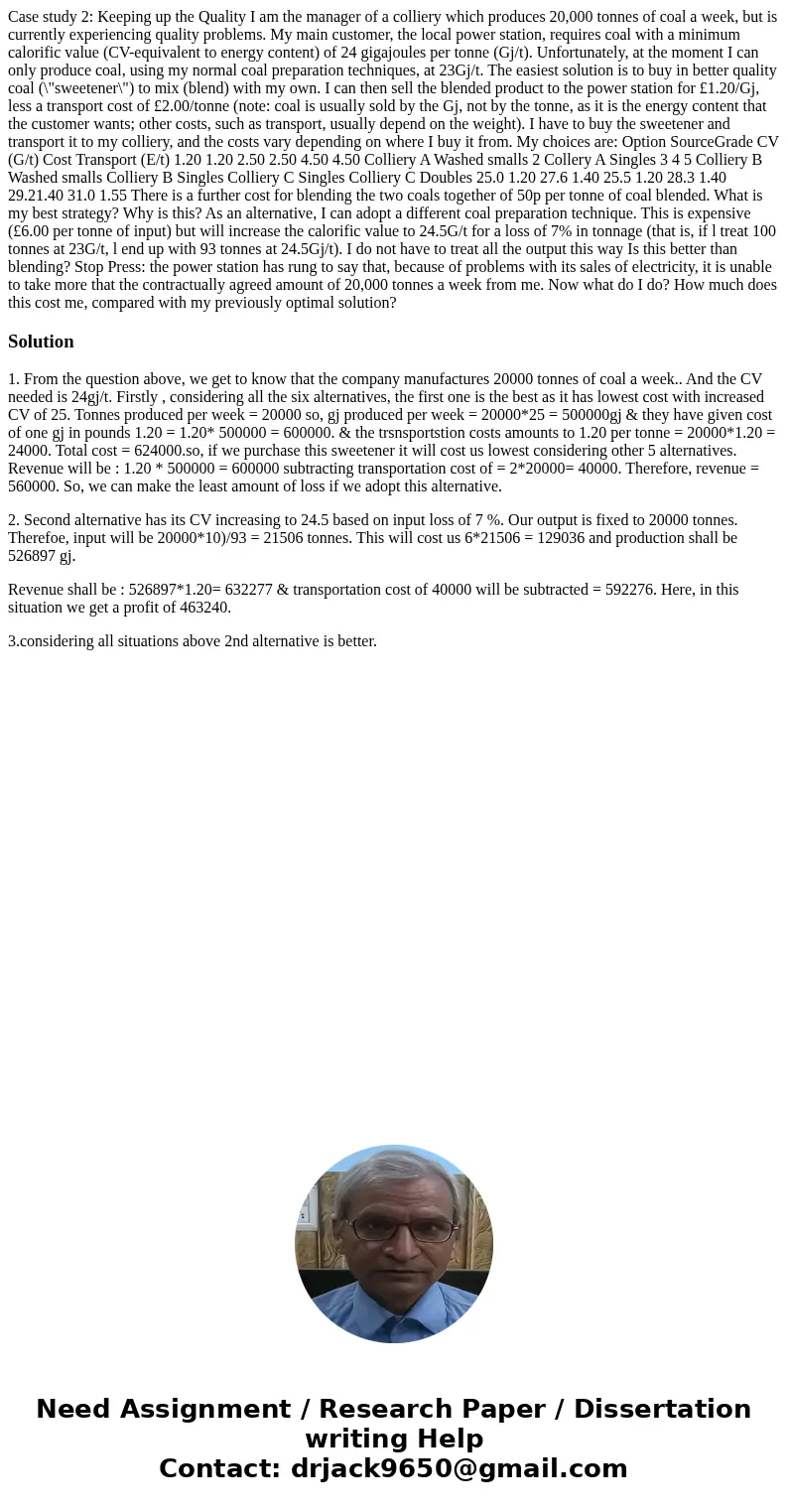Case study 2: Keeping up the Quality I am the manager of a colliery which produces 20,000 tonnes of coal a week, but is currently experiencing quality problems. My main customer, the local power station, requires coal with a minimum calorific value (CV-equivalent to energy content) of 24 gigajoules per tonne (Gj/t). Unfortunately, at the moment I can only produce coal, using my normal coal preparation techniques, at 23Gj/t. The easiest solution is to buy in better quality coal (\"sweetener\") to mix (blend) with my own. I can then sell the blended product to the power station for £1.20/Gj, less a transport cost of £2.00/tonne (note: coal is usually sold by the Gj, not by the tonne, as it is the energy content that the customer wants; other costs, such as transport, usually depend on the weight). I have to buy the sweetener and transport it to my colliery, and the costs vary depending on where I buy it from. My choices are: Option SourceGrade CV (G/t) Cost Transport (E/t) 1.20 1.20 2.50 2.50 4.50 4.50 Colliery A Washed smalls 2 Collery A Singles 3 4 5 Colliery B Washed smalls Colliery B Singles Colliery C Singles Colliery C Doubles 25.0 1.20 27.6 1.40 25.5 1.20 28.3 1.40 29.21.40 31.0 1.55 There is a further cost for blending the two coals together of 50p per tonne of coal blended. What is my best strategy? Why is this? As an alternative, I can adopt a different coal preparation technique. This is expensive (£6.00 per tonne of input) but will increase the calorific value to 24.5G/t for a loss of 7% in tonnage (that is, if l treat 100 tonnes at 23G/t, l end up with 93 tonnes at 24.5Gj/t). I do not have to treat all the output this way Is this better than blending? Stop Press: the power station has rung to say that, because of problems with its sales of electricity, it is unable to take more that the contractually agreed amount of 20,000 tonnes a week from me. Now what do I do? How much does this cost me, compared with my previously optimal solution?
1. From the question above, we get to know that the company manufactures 20000 tonnes of coal a week.. And the CV needed is 24gj/t. Firstly , considering all the six alternatives, the first one is the best as it has lowest cost with increased CV of 25. Tonnes produced per week = 20000 so, gj produced per week = 20000*25 = 500000gj & they have given cost of one gj in pounds 1.20 = 1.20* 500000 = 600000. & the trsnsportstion costs amounts to 1.20 per tonne = 20000*1.20 = 24000. Total cost = 624000.so, if we purchase this sweetener it will cost us lowest considering other 5 alternatives. Revenue will be : 1.20 * 500000 = 600000 subtracting transportation cost of = 2*20000= 40000. Therefore, revenue = 560000. So, we can make the least amount of loss if we adopt this alternative.
2. Second alternative has its CV increasing to 24.5 based on input loss of 7 %. Our output is fixed to 20000 tonnes. Therefoe, input will be 20000*10)/93 = 21506 tonnes. This will cost us 6*21506 = 129036 and production shall be 526897 gj.
Revenue shall be : 526897*1.20= 632277 & transportation cost of 40000 will be subtracted = 592276. Here, in this situation we get a profit of 463240.
3.considering all situations above 2nd alternative is better.

 Homework Sourse
Homework Sourse